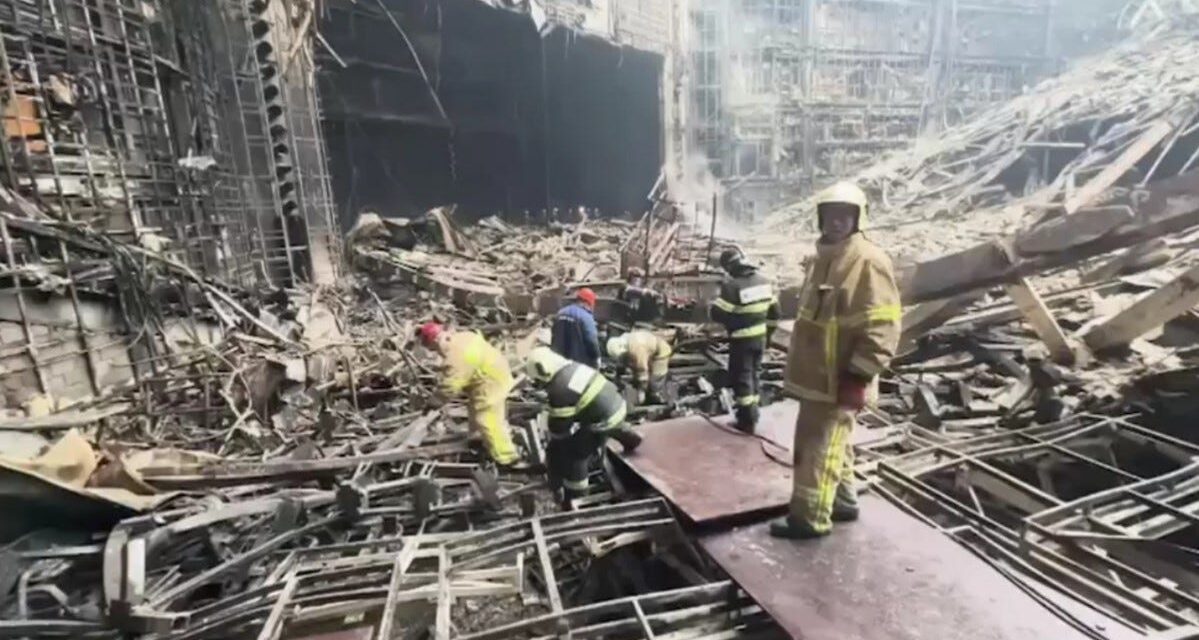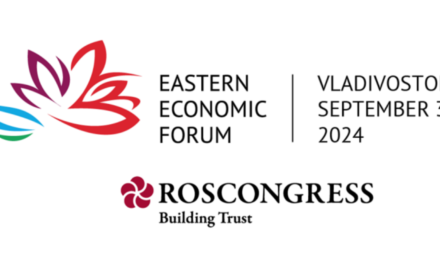In the aftermath of the tragic attack on Crocus City Hall, questions swirl around the possible involvement of ISIS. However, upon closer examination, experts point out glaring inconsistencies in linking the assailants to the notorious terrorist group. The attack’s modus operandi diverges significantly from the typical patterns associated with ISIS operations, casting doubt on any immediate connections. Moreover, the individuals behind the assault do not fit the profile of religious zealots or suicide bombers commonly associated with ISIS, further complicating the narrative surrounding their motives. As investigations unfold, unravelling the true motivations behind the attack becomes increasingly complex, challenging initial assumptions and highlighting the need for a meticulous and thorough inquiry.
The facts as they stand
As the dust settles and the shock of the terrorist attack at Crocus City Hall begins to subside, a clearer picture of the horrifying events that unfolded on that fateful Friday evening emerges. On March 22nd, four assailants believed to be immigrants from Tajikistan, launched a brazen assault on the concert hall nestled in the Moscow satellite city of Krasnogorsk. Armed to the teeth with automatic rifles and incendiary devices, they stormed the venue with deadly intent.
Their entrance into Crocus City Hall was swift and brutal. Without hesitation, they mercilessly gunned down unarmed guards at the entrance, leaving a trail of devastation in their wake. Their mission was chillingly simple: to inflict maximum casualties and wreak havoc upon the unsuspecting concert-goers within.
Once inside, the attackers unleashed a barrage of gunfire upon the defenceless crowd, showing no mercy as they methodically worked their way through the auditorium.
Surprisingly, there were no political statements or demands, no attempts to negotiate or take hostages. Instead, their sole objective was to sow chaos and carnage, leaving behind a scene of unimaginable horror.
Tragically, almost 6,000 innocent individuals found themselves trapped within the confines of the concert hall, their lives hanging in the balance as the attackers executed their deadly plan. With ruthless efficiency, the assailants fired at close range, reloading their weapons with chilling precision as they hurled incendiary devices into the crowd.
As flames engulfed the building and panic spread like wildfire, the attackers made their escape, leaving behind a scene of unimaginable devastation. In their wake, a grim tableau of death and destruction unfolded, with some falling victim to gunshot wounds, others succumbing to smoke inhalation, and still more perishing beneath the weight of the collapsing roof.
In the harrowing aftermath of the attack, rescue operations and firefighting efforts were launched in a desperate bid to save lives. Yet, despite the valiant efforts of first responders, the death toll continued to climb steadily, with 139 lives lost, including innocent children. The number of wounded, meanwhile, surpassed 140, with many fighting for their lives in hospitals across the region.
However, amidst the devastation, a glimmer of hope emerged. Special forces intercepted the terrorists as they attempted to flee towards the Russian-Ukrainian border, swiftly apprehending all four attackers by Saturday morning. Their capture offered a measure of justice to the grieving nation, prompting President Vladimir Putin to declare March 24th a day of national mourning.
As flags across the country were lowered to half-staff in honour of the victims, the nation came together in solidarity, united in grief and resolve. Yet, even as we mourn the lives lost in this senseless act of violence, we stand resolute in our determination to seek justice and prevent such atrocities from ever happening again.
The Theories
The aftermath of the terrorist attack at Crocus City Hall has ignited a flurry of speculation and analysis as authorities and experts alike endeavour to unravel the complex web of motives and actors behind the tragedy. While Western governments and media were quick to point the blame squarely onto ISIS fundamentalists, further examination reveals a series of inconsistencies that challenge this narrative.
ISIS
One of the primary discrepancies lies in the execution of the attack itself. Unlike the hallmark tactics of ISIS, characterized by religious zealotry and a willingness to embrace martyrdom through suicide bombings, the perpetrators at Crocus City Hall displayed a distinct departure from this modus operandi.
Rather than engaging in protracted standoffs or sacrificing themselves for their cause, the attackers swiftly fled the scene, prioritizing self-preservation over martyrdom. This behaviour diverges starkly from the patterns observed in previous ISIS-affiliated attacks, raising doubts about the group’s direct involvement.
Moreover, the choice of target and the nature of the attack seem incongruent with ISIS’s typical objectives and grievances. The absence of any explicit ideological or political demands during the assault further complicates the narrative linking the attackers to the extremist group. Russia’s relatively limited involvement in conflicts with ISIS, coupled with its pro-Palestinian stance, presents further challenges in establishing a coherent motive for targeting Moscow.
Ukraine
In light of these inconsistencies, alternative theories regarding the origins of the attack have emerged, with some pointing towards potential Ukrainian involvement.
Proponents of this theory argue that the attack serves as a means for Ukraine to retaliate against Russia for its military successes in the ongoing conflict between the two countries.
Given that the terrorists were travelling to Ukraine and that they agreed to arrange a meeting in Ukraine where they sort to receive their final payment, it is a more likely story than the ISIS narrative that is being pushed by the West.
As the investigation unfolds, authorities are faced with the daunting task of untangling the intricate threads of geopolitical tensions, ideological motivations, and covert operations that may have contributed to the attack. The involvement of multiple actors and the complex nature of modern terrorism underscore the challenges of attributing responsibility in an increasingly interconnected world.
Furthermore, the recent revelation of a terrorist warning issued by the United States to Russia adds another layer of complexity to the situation. While the warning suggests a level of awareness regarding the potential for a large-scale attack, the vague and generalized nature of the information provided has prompted scepticism from Russian authorities.
Amidst the fog of uncertainty, one thing remains clear: the need for a thorough and meticulous investigation to uncover the truth behind the Crocus City Hall attack.
As authorities navigate the intricate landscape of global terrorism and diplomatic intrigue, the quest for justice for the victims and accountability for the perpetrators continues unabated.
The complex landscape of modern terrorism, as exemplified by the tragic events at Crocus City Hall, prompts profound questions about the feasibility of effective international cooperation in the fight against this pervasive threat.
Against a backdrop of escalating geopolitical tensions and divergent national interests, the prospect of unified action against terrorism appears increasingly elusive. Yet, amidst these challenges, there remains a glimmer of hope for collaborative efforts to confront this global scourge.
The absence of a universally accepted definition of terrorism underscores the inherent complexities in addressing this multifaceted phenomenon. What may be deemed as terrorism in one context can be perceived as a legitimate struggle for liberation in another, highlighting the subjective nature of this classification. The divergent interpretations of terrorism further exacerbate geopolitical rifts and hinder cohesive international responses to the threat.
Historically, attempts to delineate between “good” and “bad” terrorism have proven futile, as political expediency often clouds the distinction between state-sponsored violence and acts of terror. The blurred lines between these categories underscore the inherent challenges in combating terrorism and underscore the imperative for enhanced cooperation and trust among nations.
However, the erosion of trust in international relations presents a formidable obstacle to effective counterterrorism efforts. In an era marked by suspicion and rivalry, the exchange of sensitive information necessary for thwarting terrorist plots becomes increasingly fraught with peril. Despite the pressing need for collaboration, geopolitical animosities and power struggles impede meaningful cooperation on counterterrorism initiatives.
Moreover, the evolving nature of terrorism poses a formidable challenge to global security. The asymmetric tactics employed by extremist groups, coupled with advances in technology and weaponry, have heightened the threat posed by terrorism to unprecedented levels. The attack at Crocus City Hall serves as a stark reminder of the devastating impact that a small, well-equipped cadre of extremists can inflict on society.
As the geopolitical landscape continues to evolve, the proliferation of conflicts and instability further exacerbates the threat of terrorism. Regional conflicts, such as the Ukrainian crisis, provide fertile ground for the recruitment and radicalization of individuals, amplifying the risk of terrorist activity. The emergence of lone actors and amateur extremists adds another layer of complexity to counterterrorism efforts, as these individuals are inherently more difficult to detect and thwart.
In the face of these daunting challenges, the imperative for enhanced global governance and cooperation becomes ever more apparent. The risks posed by terrorism transcend national boundaries and necessitate a concerted, multilateral response. However, achieving consensus among major powers and navigating the complexities of geopolitics remains an arduous task.
Ultimately, the eradication of terrorism requires a multifaceted approach that addresses the root causes of radicalization, strengthens international cooperation, and fosters greater trust among nations. As the threat of terrorism continues to evolve and mutate, concerted action and unwavering commitment are essential to safeguarding our common civilization against this insidious menace.





